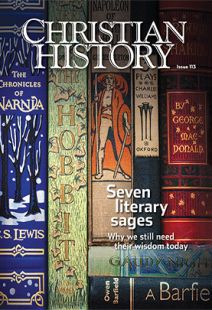Meeting Professor Tolkien
I FIRST MET J. R. R. Tolkien late on the afternoon of September 1, 1964. His fame was then rapidly on the rise, and he had been forced to escape his public whenever he could. Visitors were more or less constantly at his door and his telephone busy. Phone callers from the United States sometimes forgot the time differential and would get him out of bed at two or three o’clock in the morning.
With great hopes and some fears I walked to 76 Sandfield Road, opened the gate, nervously approached his door, and rang the bell. I waited what seemed to me a very long time and was on the point of a reluctant departure when the door opened and there stood the man himself. Tolkien matter-of-factly invited me inside. . . . We went into his downstairs office, remodeled from a garage. Possessing no automobile, he was then using taxis for errands to Oxford, two miles away, and elsewhere.
After his sober greeting at the door, I found him immediately friendly as we sat down. Tolkien was a most genial man with a steady twinkle in his eyes and a great curiosity—the sort of person one instinctively likes. I . . . told him that, like thousands of others, I had come to love [Lord of the Rings] and regard it as something of a classic. He laughed at the idea of being a classical author while still alive, but I think he was pleased. He then became a bit apologetic and explained that people sometimes regarded him as a man living in a dream world. This was wholly untrue, he insisted, describing himself as a busy philologist and an ordinary citizen interested in everyday things like anybody else. . . .
To my surprise, at the end of our brief visit, Tolkien warmly invited me back for the morning of September 4, the day before I was to fly home to the US. At that time Mrs. Tolkien greeted me at the door and showed me upstairs to her husband’s main office, a room crowded with a large desk, a rotating bookcase, wall bookcases, and a cot. I was received like a longtime friend.
After returning to the United States, Kilby wrote to Tolkien, offering to come help him gather his scattered manuscripts regarding Middle-earth into publishable form; he spent the summer of 1966 in Tolkien’s company.
By Clyde S. Kilby
[Christian History originally published this article in Christian History Issue #113 in 2015]
Clyde S. Kilby (from Tolkien and the Silmarillion).Next articles
Christian History timeline: Biographies of the seven sages
Brief biographies of our featured authors
Matt ForsterThe poetic vision of a connected world
The difficult works of Charles Williams (1886-1945) tell of self-giving love and mystical union
Brian HorneWas the oddest Inkling the key Inkling?
It was often Williams's agitated intellect, fertile imagination, and physical energy that moved things along
Thomas HowardSupport us
Christian History Institute (CHI) is a non-profit Pennsylvania corporation founded in 1982. Your donations support the continuation of this ministry
Donate



